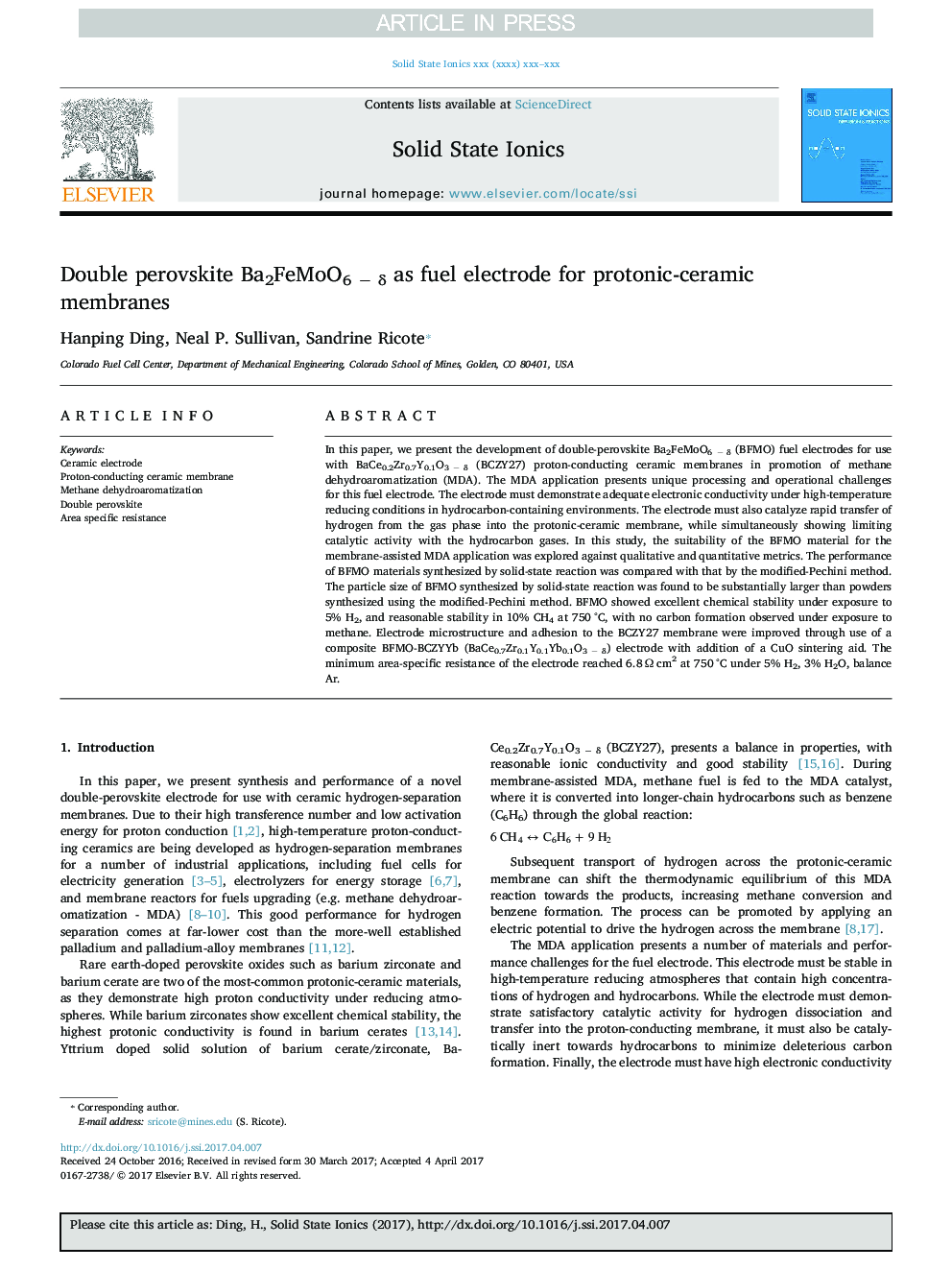| Article ID | Journal | Published Year | Pages | File Type |
|---|---|---|---|---|
| 5150544 | Solid State Ionics | 2017 | 7 Pages |
Abstract
In this paper, we present the development of double-perovskite Ba2FeMoO6 â δ (BFMO) fuel electrodes for use with BaCe0.2Zr0.7Y0.1O3 â δ (BCZY27) proton-conducting ceramic membranes in promotion of methane dehydroaromatization (MDA). The MDA application presents unique processing and operational challenges for this fuel electrode. The electrode must demonstrate adequate electronic conductivity under high-temperature reducing conditions in hydrocarbon-containing environments. The electrode must also catalyze rapid transfer of hydrogen from the gas phase into the protonic-ceramic membrane, while simultaneously showing limiting catalytic activity with the hydrocarbon gases. In this study, the suitability of the BFMO material for the membrane-assisted MDA application was explored against qualitative and quantitative metrics. The performance of BFMO materials synthesized by solid-state reaction was compared with that by the modified-Pechini method. The particle size of BFMO synthesized by solid-state reaction was found to be substantially larger than powders synthesized using the modified-Pechini method. BFMO showed excellent chemical stability under exposure to 5% H2, and reasonable stability in 10% CH4 at 750 °C, with no carbon formation observed under exposure to methane. Electrode microstructure and adhesion to the BCZY27 membrane were improved through use of a composite BFMO-BCZYYb (BaCe0.7Zr0.1Y0.1Yb0.1O3 â δ) electrode with addition of a CuO sintering aid. The minimum area-specific resistance of the electrode reached 6.8 Ω cm2 at 750 °C under 5% H2, 3% H2O, balance Ar.
Related Topics
Physical Sciences and Engineering
Chemistry
Electrochemistry
Authors
Hanping Ding, Neal P. Sullivan, Sandrine Ricote,
